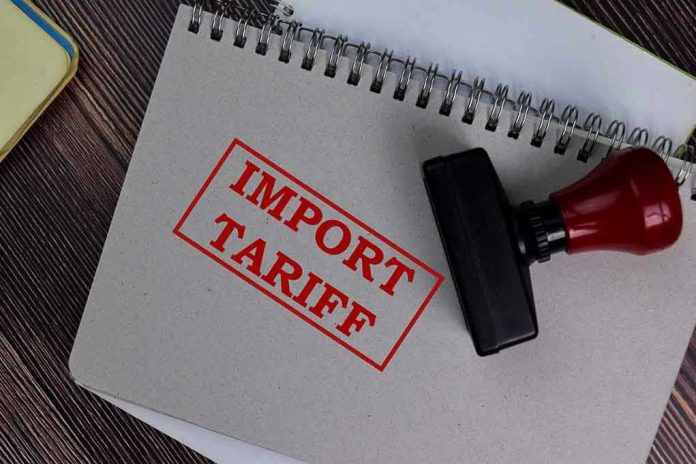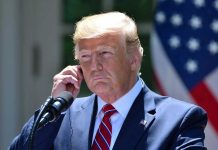
President Trump’s vow to slap an extra 10 percent tariff on every BRICS nation daring to challenge the U.S. dollar has global elites in panic mode while American taxpayers are left wondering why the world’s most powerful country keeps having to play defense on its own turf.
At a Glance
- Trump threatens a sweeping 10% tariff on all BRICS members supporting de-dollarization.
- Tariffs are set to hit August 1, 2025, but Trump signals room for negotiation if BRICS leaders “make a better offer.”
- Move aims to protect U.S. economic dominance and the dollar’s global standing amid BRICS’ “Global South” agenda.
- Experts warn of higher consumer prices, trade wars, and long-term risks to U.S. exporters and global supply chains.
Trump Draws a Hard Red Line on Economic Sovereignty
Donald Trump is not mincing words as he gears up for his second term. On July 8, 2025, the president announced that any country “aligning themselves with the anti-American policies of BRICS” will face an additional 10 percent tariff, effective August 1. That’s right—after years of watching U.S. adversaries plot to chip away at the dollar, Trump is putting his foot down, daring them to test America’s economic resolve. The message is clear: try to undermine the U.S. dollar, and there will be a price to pay.
The timing could not be more pointed. As leaders from Brazil, Russia, India, China, and South Africa gathered in Brazil for their 2025 summit—joined now by a handful of “new friends”—Trump made it plain that the United States will not just sit back and watch as BRICS pushes its “multipolar world” fantasy. The president’s declaration came on the heels of BRICS’ latest pledge to strengthen “Global South Cooperation” and pursue alternative payment systems that sidestep the dollar altogether. With the world’s financial order at stake, Trump is betting that tough talk—and even tougher tariffs—will remind these countries where the real economic power lies.
Tariffs as a Tool: Old Playbook, New Stakes
Trump’s first term was marked by tariffs on China, the EU, and anyone else who got cute with American trade interests. This time, however, the stakes are even higher. The president’s new round of tariffs is aimed squarely at those who threaten the greenback’s supremacy. According to government statements and major news outlets, the tariffs will begin August 1, but Trump has left the door open to negotiation: “If they call with a different offer, and if I like it, we’ll do it.” In other words, there’s a path off the tariff train—but only if BRICS leaders are willing to play ball on American terms.
The underlying message? The U.S. is tired of carrying the world on its back, subsidizing foreign economies, and watching American workers pay the price. For years, Washington insiders have wrung their hands over the “fragile” state of global trade. But the average American doesn’t need a PhD in economics to know that endless compromise and appeasement have yielded record deficits, shuttered factories, and a hollowed-out middle class. Trump’s hardline approach is a rebuke to decades of failed policy—and a warning that those days are over.
Winners, Losers, and the High Price of Global Ambition
Many trade experts warn that tariffs come with a steep cost. Higher import prices could hit U.S. consumers and businesses, especially in industries reliant on BRICS countries for manufacturing, agriculture, and technology. Meanwhile, the threat of retaliation hangs heavy. If BRICS responds in kind, we could be looking at a full-blown trade war with ripple effects across the globe. Financial markets have already shown jitters, and multinational corporations are scrambling to assess the fallout.
Yet there’s a deeper issue at play—one that goes beyond the short-term pain of higher prices. The longer BRICS pushes its de-dollarization campaign, the greater the risk that countries around the world will seek alternatives to U.S. markets and the dollar. Trump’s strategy is not just about tariffs; it’s about defending the very foundation of American power. Critics argue that targeting BRICS as a bloc may be less effective, given the diversity of its members and their economic interests. But supporters see it as a necessary stand against an alliance determined to rewrite the rules of the global economy.
The Constitutional Stakes: National Interest or Global Appeasement?
What’s truly absurd is how America’s economic sovereignty has become a bargaining chip in a global game. While Washington bureaucrats fret over “inclusive governance,” the rest of us are left to wonder why protecting American jobs, industries, and the Constitution is suddenly controversial. The president’s move is a blunt reminder that the U.S. has every right—indeed, a duty—to prioritize its own interests. For decades, so-called experts insisted that endless compromise was the only way forward. But compromise with whom? With regimes that jail dissidents, crush free markets, and now want to dictate the rules of global trade?
It’s a familiar script: foreign elites push radical agendas, American taxpayers get left holding the bag, and the media lectures us about “global cooperation.” Trump’s tariffs may not solve every problem overnight, but they signal a return to common-sense priorities: defending the dollar, American industry, and the values that made this country great. The world may not like it. But for millions of frustrated Americans, it’s about time someone in Washington remembered whose side they’re supposed to be on.







